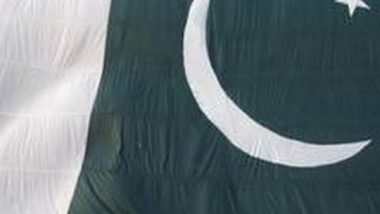
Islamabad, Pakistan:
Dr Michael Rubin, a Senior Fellow at the American Enterprise Institute (AEI), writing in 1945 said that they do so in order to maintain normal relations with other countries.
Speaking at a forum in Uzbekistan last month, Pakistani Prime Minister Shehbaz Sharif declared, “Pakistan has been a victim of terrorism. I don’t have to go into its history. But suffice it to say that we have made huge sacrifices to defeat the monster of terrorism. Thousands of Pakistanis were martyred – brothers, sisters, mothers.”
Sharif’s statement is boilerplate. The Pakistan situation is not analogous, though, as the terrorists exist not in reaction to a foreign policy but rather as a deliberate decision by Pakistan’s own internal security apparatus.
The roots of Pakistani Islamization date back to the independence of Bangladesh. After Pakistan lost what until then it governed as “East Pakistan,” the Pakistani military concluded it needed a religious identity to trump ethnic identity, lest the latter became a hook for additional separatism, reported 1945.
That extremism gained in infrastructure under General Zia ul-Haq, who seized power on July 5, 1977.
As long-time Indian ambassador Dinkar P. Srivastava wrote in Forgotten Kashmir, “Though the trouble in Kashmir erupted later, Zia had created the ecosystem of extremist philosophy, madrasas and training camps for terrorist activities.”
In his 2011 book Afghanistan and Pakistan–Conflict, Extremism, and Resistance to Modernity, for example, Riaz Mohammad Khan, Pakistan’s foreign secretary between 2005 and 2008, described Harakat-ul-Mujahideen, Lashkar-e-Taiba, and later Jaish-e-Muhammad as the “main supporters of the Kashmir militancy in Pakistan at the early stages.”
The wildfire grew quickly and did not limit itself to Kashmir. Just as Pakistan utilized its position as the doorway to Afghanistan to empower Afghan Islamists after the Soviet invasion, so too did it cultivate and coddle the Taliban.
Essentially, the terrorists were agents of the state, protected by the state both before and, in the case of perpetrators who escaped or returned to Pakistan, after the operations as well, said Rubin.
There is no one better to chronicle Pakistan’s strategy and the growth of Pakistani militancy than a scholar and diplomat Husain Haqqani. His book, Pakistan: Between Mosque and Military, is the fundamental text of the field.
Pakistani authorities continued to transform their territory into a strategic depth for the Taliban and sought to accommodate Taliban groups on the Pakistani side of the Durand Line.
Here, Ashkok Behuria’s excellent study Tehrik-e-Taliban Pakistan: Origin, Evolution and Future Portents is instructive. Suffice it to say, accommodating the Taliban in Waziristan backfired tremendously. Scores of Pakistani soldiers died because of the ISI’s extremist strategy and its incompetent belief that it could control the fire.
In a May 2022 Foreign Affairs essay, Haqqani describes how Pakistan’s support for the Taliban has come back to bite them. The Taliban’s victory in Afghanistan has only galvanized Pakistani terrorists.
The reality is that Sharif’s demand for sympathy and his efforts to win diplomatic sympathy for Pakistani soldiers and civilians killed by terrorists inside Pakistan fall flat until he and other political leaders are willing to acknowledge the ISI’s direct responsibility.
Pakistan does not deserve F-16 upgrades or, indeed, any other military assistance until it can overcome the ISI stranglehold on policy and hold the current and former ISI chiefs personally accountable for the murders their favoured terrorists committed on their watch, said Rubin.






